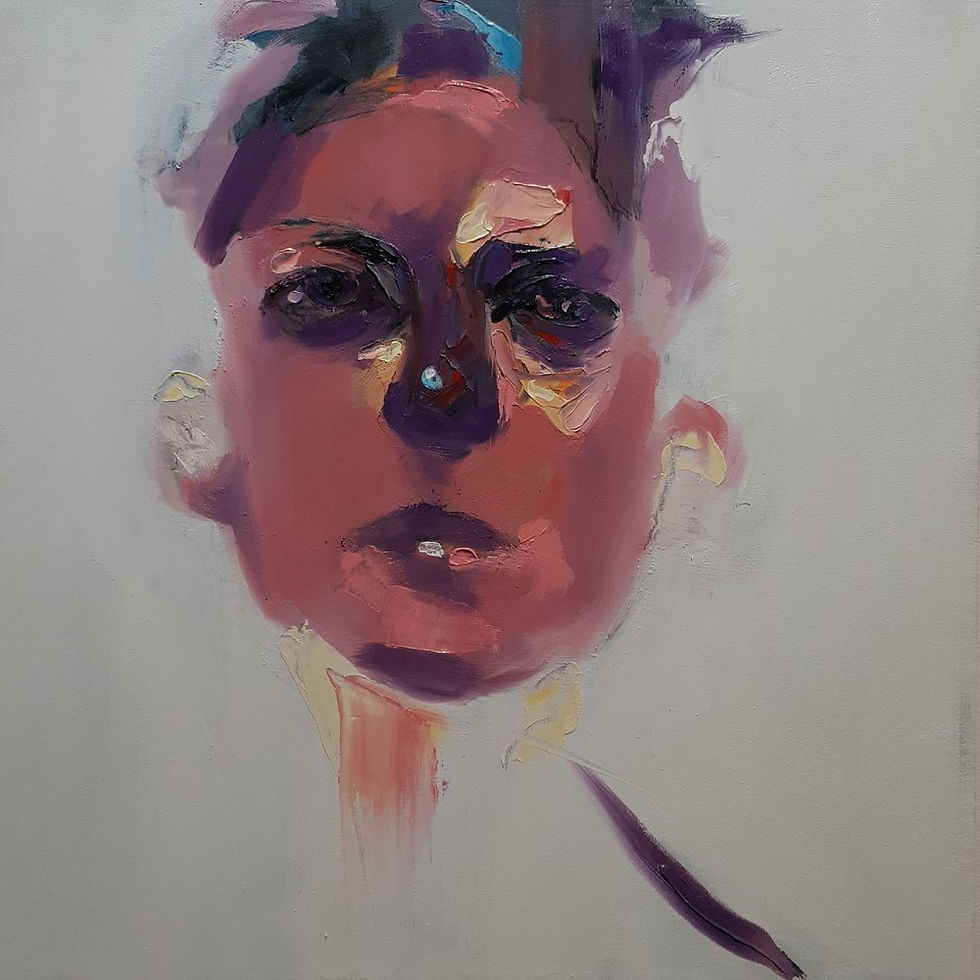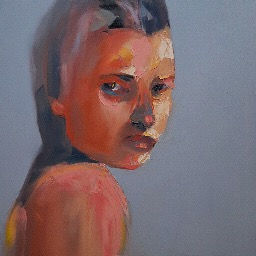Carlos DELGADO
Carlos Delgado has garnered much international recognition in the past decade. Dividing his time between his native Colombia and his adopted city of Toronto, his works explore a multitude of human expressions and interactions—as his subjects relate to each other as well as their imposed social constructs—a duality mirrored by Delgado’s own two-city life.
Focused on capturing these nuances and tensions that permeate our daily routines, his work becomes not only a social commentary, but also a reflection of how we create the world around us and our respective roles within it. Delgado enhances these emotive paintings through gestural brushwork, drawing his figures with broad strokes, abstracting certain details while emphasizing their distinguishing features. Bold colours further play with the portraits and their settings, highlighting positive and negative space, distorting the 3-dimensionality, and demonstrating Delgado’s painterly confidence.
In the tradition of figurative painting, Delgado stands apart with a marked contemporary aesthetic. In his young career, he has been a winner of several art awards by the Toronto Arts Foundation, the Toronto Arts Council and the Canada Arts Council, as well as being an artist in residence at Power Plant Contemporary Art Gallery in Toronto. His work has been shown in group and solo shows in Canada, Colombia, Sweden, Denmark, Norway, France, and Russia, and is collected by private collectors in North America, South America, Europe, Asia, and Australia.
Most recently, Carlos completed an artist residency in Barcelona, Spain, where he was able to further develop the idea to create art in the galleries themselves, amongst an audience of collectors. The tour, entitled, "Transition," began in his homeland, Colombia, before it moved to Europe, where he continued this practice in galleries in Malmö, Sweden and Bergen, Norway, with live paintings and solo exhibitions. Extending this concept to North America, his final stop will be in Toronto, Canada, at Emily Harding Gallery, which has shown his work since its inception, and where he felt the need to finish where it all started.
Artist STATEMENT
I am fascinated by the way human beings express themselves and relate to one another within our modern systems. The environment that I am in, including all of the cultural and social aspects, are the influences and the subjects of my work. Within these systems I try to find the human elements, those subtle expressions of our emotions, experiences and stories that make us unique and yet at the same time connect us to each other. Through my abstract portrait work, I focus on the subtle way these human experiences are expressed, be it in our facial gestures, in the way we occupy and share space with each other, or the way we present ourselves to the world.
My drawings and sketches are my instantaneous translations of the wide array of emotions around me—the way someone looks in a particular direction, or the way they avoid eye contact in a public space. All of these are masks that we wear in public, masks which, even though they may try, do not hide the complexity of our emotional human self. The sketches grab a particular emotion and look past the chaos of the façade and every day realities to find the emotional stories of the people around me. They are created fast and organically, as to not lose any of the subtle self-expression shared through a look, a posture, a gesture, a glance.
Translating these moments, I create abstract paintings, oftentimes playing with the techniques of mark-making with a palette knife, and letting the paint naturally form and interweave. The faces in the paintings are not one particular person, rather they are the emotional translation of the world around me, of many people in one, including myself. They are the reflection of the world we live in and also relate to. The colour palettes are formed through a process of layering, and reflect many states in any given moment. For example, a dark piece can at the same time seem sad and nostalgic, as it can be hopeful and strong. Human emotion and the experience of that emotion is never manifested in one simple way; as such, the paintings and the drawings invite the the viewer to find their own story within it, allowing for a sense of relatedness. In a world where there is much disconnection from each other, where we co-exist together in same spaces and yet are not connected, my work hopes to connect us to those subtle experiences that make us all human.
































